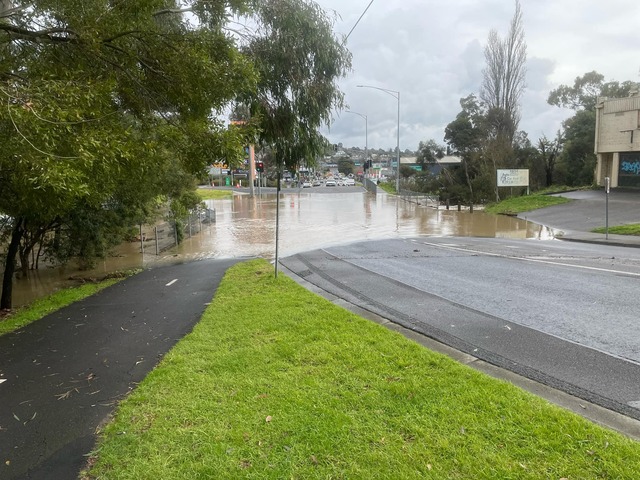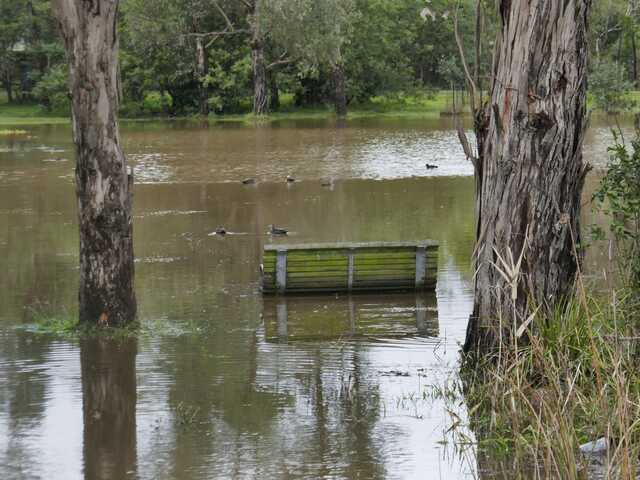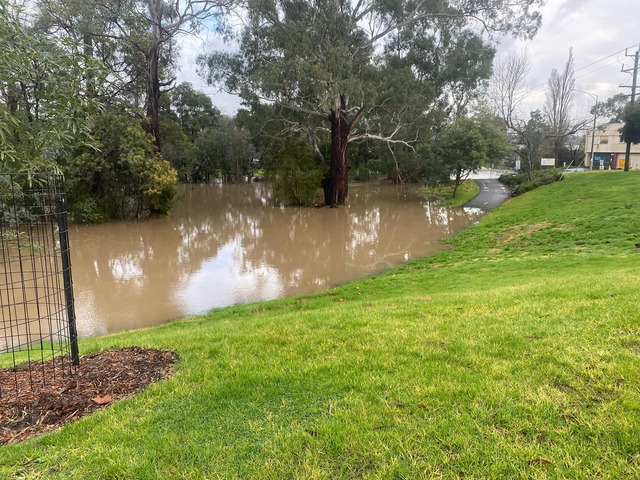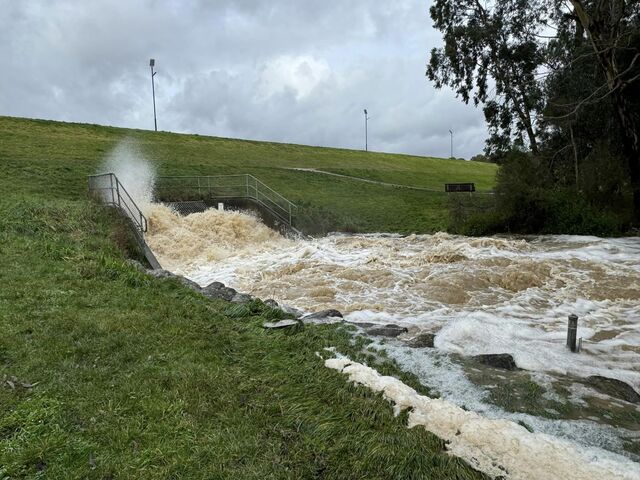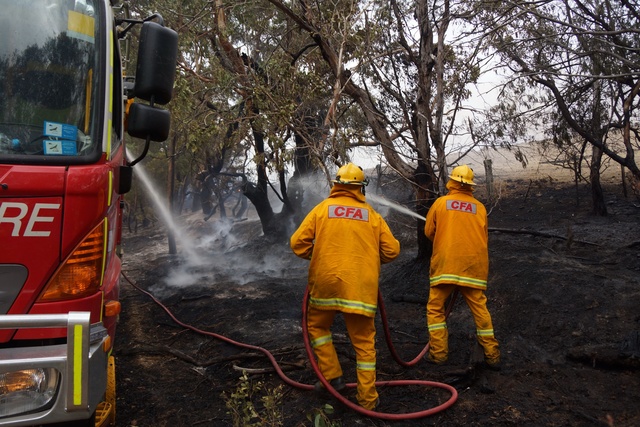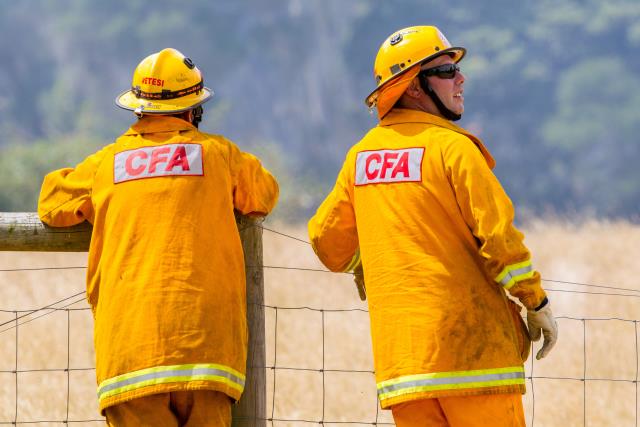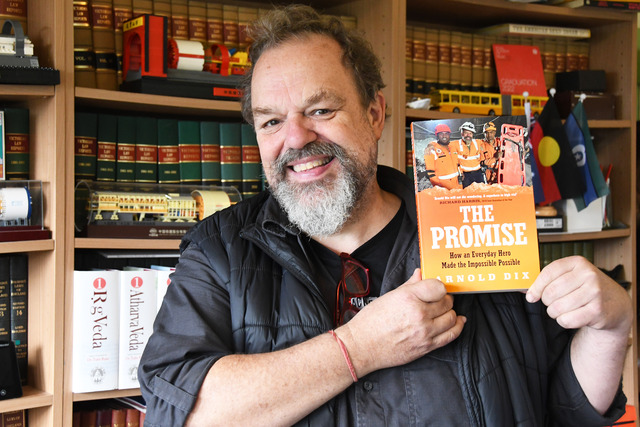Winter’s first instance of extended rainfall brought with it excess amounts of water causing flash flooding across the Yarra Ranges early this week.
The rain event which increased from Monday 15 July through to the early hours of Tuesday morning, Lilydale SES unit controller Shaun Caulfield said, saw sharp bursts of heavy rainfall in specific locations.
“With the changes in our weather patterns, we’re not having more rain, we’re just having it in shorter bursts which seems to be the pattern of the last couple of years,” he said.
“So our average rainfall for the year might be a very similar amount but we seem to be getting it on less days.
“A lot of the rain was focused over the Ferny Creek, Kallista, Olinda and Mount Evelyn area.”
The Bureau of Meteorology said on Tuesday that Ferny Creek experienced the largest amount of rainfall in the east, recording 86mm.
By 2pm on Wednesday, Mr Caulfield said the SES unit had received 68 calls for assistance, many relating to flooding of some kind.
“What we were seeing was not so much water inside houses, but a lot of people with issues of rising water levels coming from drains and runoff,” he said.
“It’s actually really hard to manage that type of flash flooding because it’s not that the water level is rising, it’s the sheer volume of surface water that’s running, say, down a hill.
“Because if it’s running towards your house, and we put barriers in place to take it around your house, it ends up in your neighbour’s house.”
Having that conversation with people who are rightly concerned about the increased amount of water in their property, Mr Caulfield said, can be quite hard because it’s a choice between diverting the water from their property into someone else’s which may have a domino effect in changing the natural watercourse.
Early in the evening on Monday, Mr Caulfield said the unit did respond to a vehicle submerged in water along Victoria Road in Wandin but a rescue wasn’t required.
“That section of Victoria Road is actually quite hard to tell [if it’s flooded], you come over a crest, around a bend and the next minute, you’re in the water. So luckily, no injuries. We assisted the person to get out of the vehicle, but they didn’t need rescuing, per se.”
Despite the rainfall easing on Tuesday, Mr Caulfield said run off from the Dandenongs and the flowing of water through drains saw an overflow at John Street and Beresford Road in Lilydale.
Swansea Road between Montrose and Mount Evelyn also saw water spill onto the road, an occurrence that is “relatively frequent” in flash flooding events.
“It’s a bit situational about where the rain is actually falling. So the different profile of that section that we call Mount Evelyn, some of it will fall more towards the north and end up down towards Lillydale Lake, and some of it will end up more towards the wetlands on that Montrose side, towards the York Road roundabout.
“It would seem that on this occasion, there was a lot more rainfall in that section, more towards York Road, which ended up building up in the wetlands originally, and that’s why those wetlands are still there, but enough that it then overwhelmed the capacity there and ended up covering Swansea Road outside Chateau Wyuna.”
In January, the rarer occurrence of water pooling outside Lillydale Lake at the Hereford Road, Anderson Street and Swansea Road roundabout, Mr Caulfield said, was more unlikely.
“That earlier incident, we had a lot more rain to the north, and we’re only talking a kilometre or two apart,” he said.
“But there was a very heavy downpour of rain around that Hereford Road, Old Gippsland Road area, and a lot of that actually funnelled down Hereford Road and came around the corner in front of the lake.
“In my 23 years that I’ve been at Lilydale SES, I’ve only seen that happen twice.”
Mr Caulfield said a smaller number of calls also came through with concern to stormwater drains overflowing.
“Unfortunately, there’s not a lot we can do in those situations. There’s no way for us to suddenly increase the capacity of a drain. It doesn’t mean it’s not concerning for people.
“A lot of the area around Ferny Creek, Kallista, Mount Evelyn, there’s a reason the majority of the drains are open spoon drains, which allows them to reach their capacity.
“If they were to put those drains, for instance, into pipes, their capacity would be reached at a far lower amount of rain. There’s a reason they’ve chosen that form of infrastructure.”
The added challenge of changing weather patterns, Mr Caulfield said, has produced a conundrum when it comes to infrastructure solutions.
“It’s very challenging to design infrastructure that will manage those extreme ends of the weather pattern, particularly as it’s more emerging,” he said.
“Some of the older infrastructure, whilst it could cope with the weather patterns from 20, 30, 40, years ago, when that infrastructure was built, it has some difficulty coping with these subtle changes in weather patterns we have seen more recently.”

